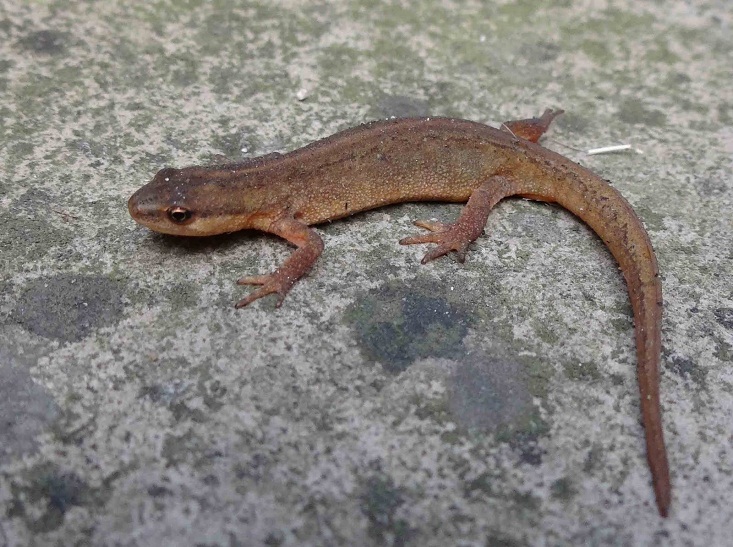 The pipistrelle glides high in the sky. This next animal is quite different, as it swims in the water and crawls along close to the ground. It is only about 10cm long, so be careful where you walk.
The pipistrelle glides high in the sky. This next animal is quite different, as it swims in the water and crawls along close to the ground. It is only about 10cm long, so be careful where you walk.

The newt is a member of the salamander family. There are three species of newt in the UK, the commonest being the smooth newt, which lives for about six years or so. The Great Crested Newt, however, can live for 25 years. Newts can be found in shallow pools and live under logs and rocks on land.
Newts are semi-aquatic. Females can produce two or three hundred eggs, which are laid on water plants in June and July. The larvae hatch in about three weeks and then live under water eating algae and insect larvae. Once they develop legs and lungs, they are able to leave the water, and the adults will live on the land. They return to the water every year to breed.
 We have got to the end of Second Island Park now and are going to move on to the next part of the trail in King George V Park. Don't try to cross the main road, unless you have an adult with you. The traffic moves very fast and the road can be dangerous. The best way to continue the trail is to use the walkway beside the river that takes you under the road and into the Park. Be careful walking so close to the river and don't use this if the tide is high and splashing over the path. Please remember to close the gates after you walk through.
We have got to the end of Second Island Park now and are going to move on to the next part of the trail in King George V Park. Don't try to cross the main road, unless you have an adult with you. The traffic moves very fast and the road can be dangerous. The best way to continue the trail is to use the walkway beside the river that takes you under the road and into the Park. Be careful walking so close to the river and don't use this if the tide is high and splashing over the path. Please remember to close the gates after you walk through.
When you get into King George V Park PRESS THIS BUTTON